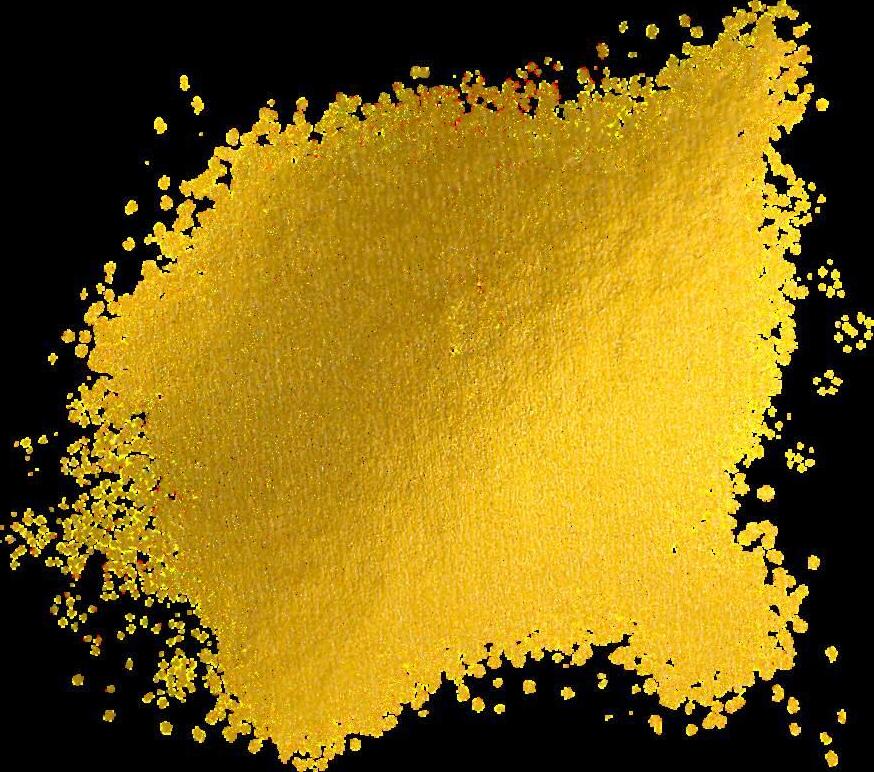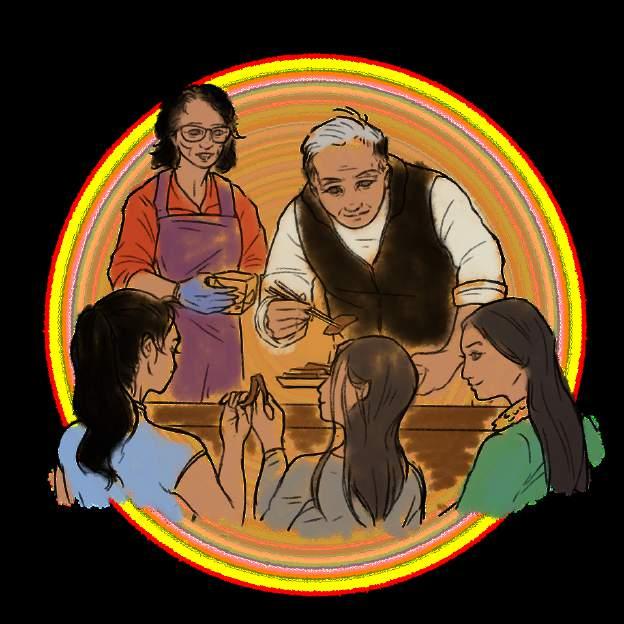
5 minute read
How to Make Pulao
Recipe by Anya Desai
Ingredients
Advertisement
1/2 cup rice carrots (depends how much you want) green beans (depends how much you want) peas (depends how much you want) vegetable/canola oil to cover bottom of pot
1 bay leaf small stick of cinnamon


2-3 cloves (if the pot you are using has a hole for steaming, stick a clove into the lid to prevent steam from escaping)
1 masala dubba spoon of jeera salt to taste red chili powder to taste
Directions
Wash and soak 1/2 cup rice.
Cut carrots and green beans and place them with peas into a bowl of water. Add oil to cover the bottom of a pot and then add bay leaf, cinnamon, clove, and jeera.
Once sizzling (before the jeera burns), add rice and saute it in the oil so it doesn't stick. Add the vegetables, salt, and red chili powder (taste the water to check the flavor).
Add 1 cup of water.
Cook on low for 20 minutes or until the rice has soaked up all the water. Serve alone or with dahi/raita.
Nian Gao Nian Gao

Br Brown sugar own sugar rice cakes rice cakes

















Ingredients: Ingredients:
Boil water, then stir in g Boil water, then stir in g until dissolved. Let mixture until dissolved. Let mixture cool to room temperature. cool to room temperature. Place rice flour in a large Place rice flour in a large mixing bowl, making a valley mixing bowl, making a valley in the middle. in the middle.
1 lb glutinous rice flour
1 lb glutinous rice flour
1.5 cups brown sugar
1.5 cups brown sugar
2 cups water
2 cups water
Olive oil Olive oil
Sesame seeds (optional) Sesame seeds (optional)
Materials: Materials:
Cake pans Cake pans
Steamer Steamer
Measuring Cups Measuring Cups
Slowly add water to flour, Slowly add water to flour, mixing it in as you go. The mixing it in as you go. The end result should be a thick end result should be a thick yet drippy liquid. yet drippy liquid.
(Optional) sprinkle sesame (Optional) sprinkle sesame seeds. seeds.
Grease a cake pan with oil Grease a cake pan with oil (I use olive oil). (I use olive oil). Pour mixture into pan, filling Pour mixture into pan, filling no more than 3/4ths of it. no more than 3/4ths of it.
Place pan in steamer for 1-2 Place pan in steamer for 1-2 hours. Once the water in the hours. Once the water in the steamer is brought to a boil, steamer is brought to a boil, turn the heat down. If the turn the heat down. If the cake is thick, it is done when cake is thick, it is done when you can stick a chopstick you can stick a chopstick upright in it and it stays. For upright in it and it stays. For hinner cake, if th hinner cake, if th opstick falls slow opstick falls slow done. done.
In my memory, the lunar new year has always had a particular scent attached to it.










The smoky wisps of the burning incense at the altar in my grandparent's dining room; the fresh fragrance of the flowers that have been brought in to decorate; the citrusy aroma of stacked tangerines with their leaves still attached; the papery perfume of the lai see we receive, always with both hands. And perhaps most exciting of all is the sweet, rich scent of nian gao glutinous rice cakes made with rice flour and brown sugar, topped with a sprinkle of sesame seeds and a single red date in its center.
It's always a treat we have around new years. After we ’ ve all eaten our second bowl of rice (because the Chinese love language is telling you to eat more), us kids will gather around the living room. With many aunts and uncles, siblings and cousins, relatives talking to each other in Cantonese from across the house, and the TV blasting, it’s a noisy but familiar atmosphere. My grandpa will bring out a metal platter of fresh slices of nian gao that he’s just fried up.
We’ll pick them up with our fingers, helping each other pull them apart. I always go for the thin, most crispy pieces. We’ll try not to get the oil on our clothes as we savor the sweet taste and chewy texture. And even when the platter isn’t quite finished, my grandparents will come out with more. Abundance is important for the new years and every family meal. Whether it’s meals at home or in a restaurant, we always make sure there’s leftovers for everyone to take home.



My grandparents have always made elaborate, time intensive meals for the new year. It’s a taste you can’t get in any restaurant; it’s a labor of love. The rice cakes, too, are homemade. In college, I have missed their cooking, having experienced many a lunar new year through photos of a full dinner table, hundreds of miles away. My grandparents are getting older, even though to me, they look the same as they always have (but perhaps I can admit that my Popo’s jet black hair is now peppered with gray). They don’t have the energy to cook such large meals anymore. My aunt told me that next time, they will order food instead.


As the years pass, I feel there is a sense of loss. Not for something that has been lost, but something I am in the process of losing—my language, their recipes, knowledge of family heritage and history. I feel like I need to catch up, to learn everything before it’s too late. But at the same time, I don’t know where to start, what to say.
“Tell me your life story.” Can I ask them that?

This year I wanted to try making nian gao myself. I would be spending new years alone at college, but I still wanted to be festive. I looked for recipes online but they all seemed wrong—not incorrect or inauthentic; in a sense, they were all authentic but they weren’t what my grandparents made. I finally did the most simple thing: ask my relatives.
The recipe presented here was obtained by texts and calls from my mom, who had texted and called my grandma, for the proper steps and ingredients. I had frantically written down her sometimes vague directions on the Notes app on my laptop as my mom rattled off what exactly to do.
“Let it steam for 1-2 hours? Is there anything more specific than that?”
“Well, it depends on how big the pan is”


“But how big is big?" and








“When do I know it’s done?”
“Just stick a chopstick in the middle—if it stands up, then its done”
“My pan is too shallow for the chopstick to stand, though. I’ll send you a picture?”










I did end up making this recipe twice, so I can say that it works (Interestingly, my second try was less successful than the first. Make sure that when you cover the steamer with something, that the condensed water on the lid does not drip down onto the cooking cake. It gives the top a weird texture. Tastes the same, though). Perhaps it will take some trial and error for you, but I think it’s all worth it in the end. There’s a shared joke that immigrant parents never give exact measurements in cooking: you just do what feels right. And with that, I share this recipe with you. Good luck!





